Eighteen of us drove down to Murupara, where we spent the night at a motor camp, then travelled for another hour or so to Mataatua where our tramp began. This is in Tuhoe territory and, before beginning our walk, we were privileged to visit the iwi’s whare, built in 1888. The interior was filled with fine carvings and photos of tribal ancestors. We split into two groups, a “fast group” of eight and a slower group of ten.
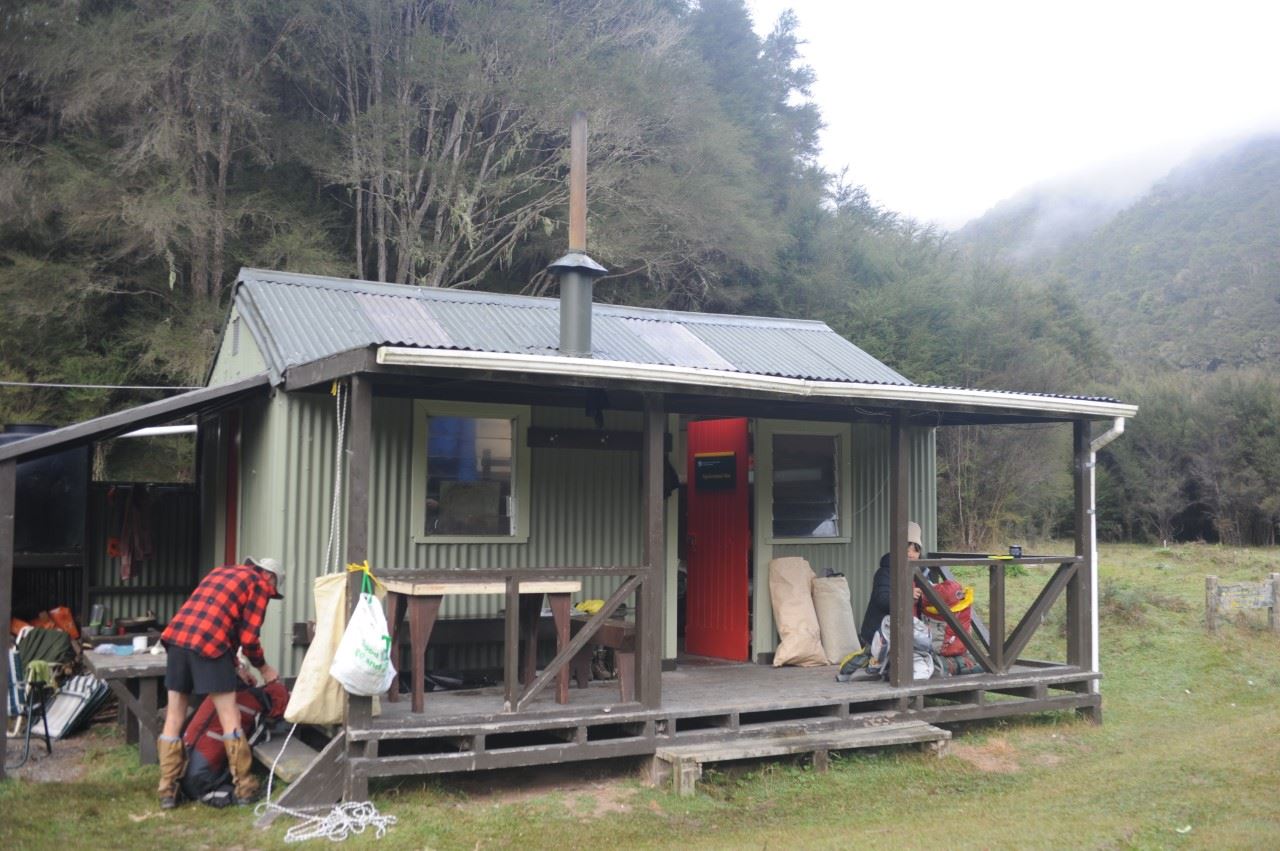
First there was a walk of about three kilometers along a gravel road, then we followed a track high above the river. There is a horse track which sometimes coincides with the walking track, and sometimes diverges. As the horse track was often more obvious than the walking track it was always necessary to pay attention. One of our veterans felt unwell and turned back, accompanied by a friend – and then there were sixteen. We reached the Tawhiwhi Hut which was empty but pushed on to the eight bunk Ngahiramai Hut, which was occupied by a party of hunters. Only a couple of the group were able to share the hut, the rest of us put up our tents. It was a cold night. We now understand why hunters refer to this season as the roar – stags were roaring and bellowing around us all through the night.
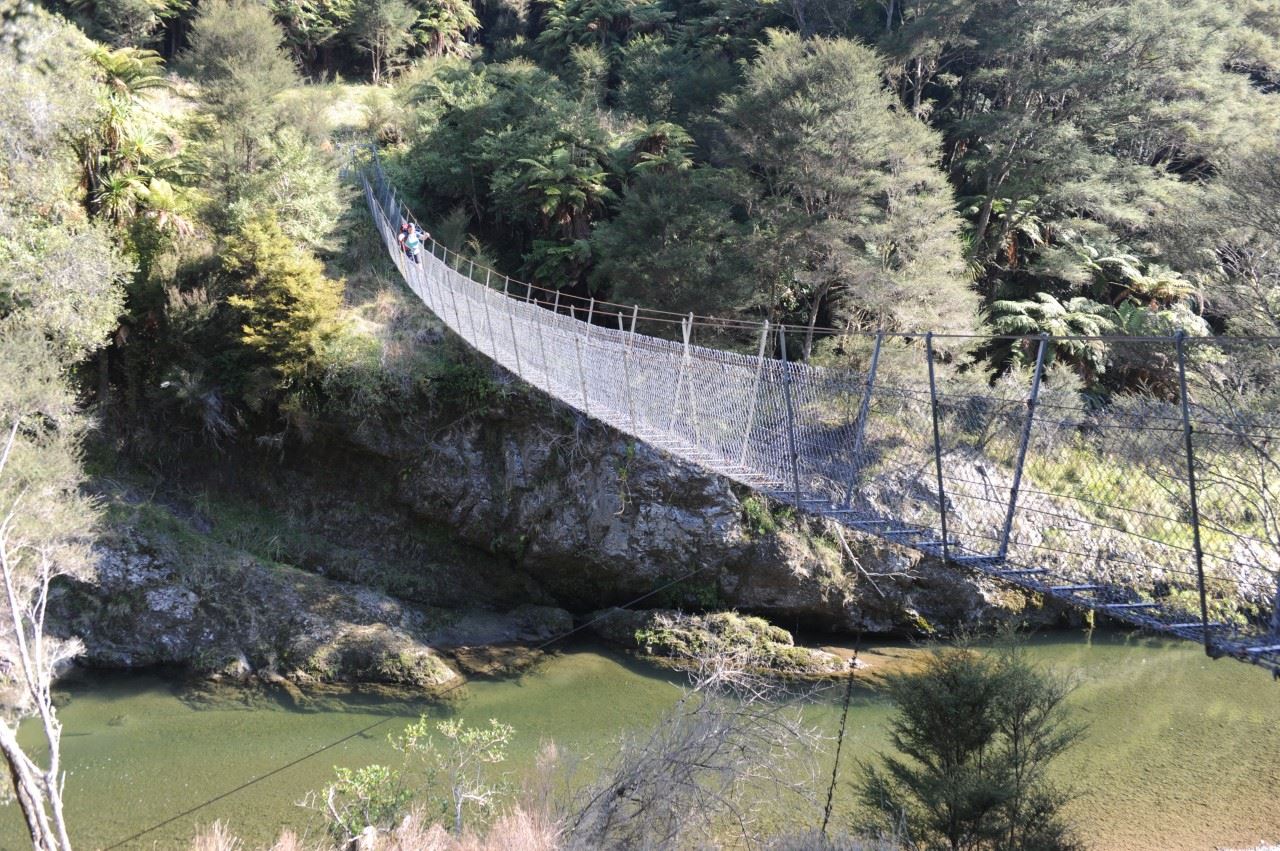
The following day the track dropped down closer to the level of the river. Much of it was overgrown and track marking was erratic – often no markers at all could be found. At one place we were puzzling whether to continue along the river bank or climb higher up the hillside when someone observed “Look up!” – there was a swing bridge thirty meters right above our heads. We had lunch at the Hanamahihi Hut – a pleasant position above the river and another swing bridge, but swarming with wasps. Once across the bridge, rather than follow the river along a broad loop we cut across inland, climbing two or three hundred meters. The track became extremely difficult; narrow, steep, with loose stones underfoot. Shadows lengthened, the sun sank behind the hills, and it became clear that we would not reach the Waikare Junction Hut before dark. The fast party forded the river and camped on a grassy verge, the slower party found a campsite a few hundred meters behind on the opposite bank. With less than a hundred meters to go, Rose had an accident, broke a fibula (one of the bones in the lower leg) and was evacuated to Rotorua by helicopter. Then there were fifteen. Apparently, one or two of her team mates wished they could accompany her.
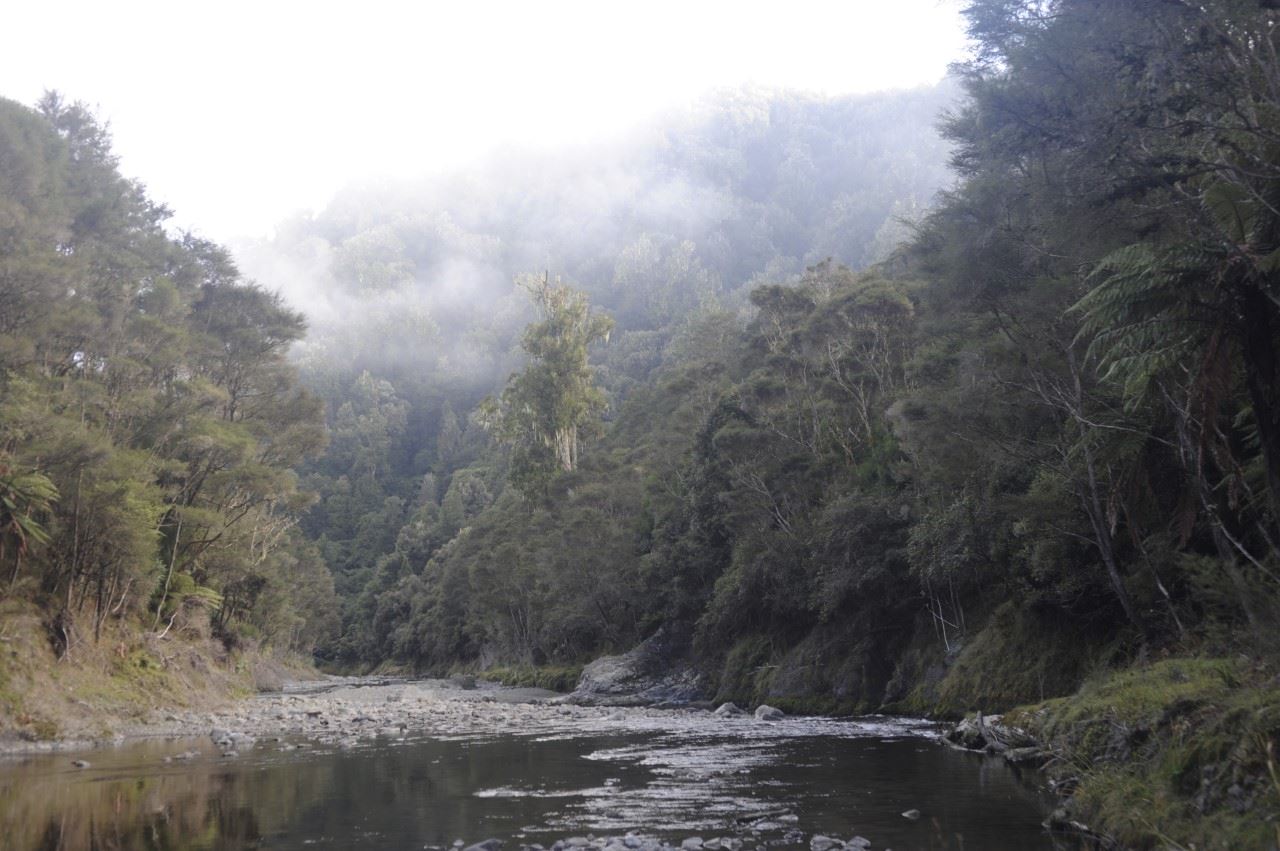
With time to make up, we started early the next morning. Even when fresh and with good light, it took us two hours to reach the Waikare Junction Hut, sited on a spectacular position high above the river. We noted a large weed-whacker, indicating that a track maintenance crew was based there. Still plenty for you to do, boys. We descended to the river and, once again, completely lost the track. Some climbed to the top of a very steep, densely forested hillside, others tried lower down but all routes seemed to end up in a ravine. It was Campbell who finally located a route through the jungle. A hundred meters further on, there were stairs and a foot bridge, just as if we were on one of the Great Walks! Soon afterwards we entered more open country and made better progress. The land in this area must have been cleared for agriculture at some time in the past, but was now heavily overgrown with blackberry and ferns. We reached the Ohura Hut in mid-afternoon. It was empty and had nineteen bunks but some detected an odour of rats and preferred to sleep in tents.
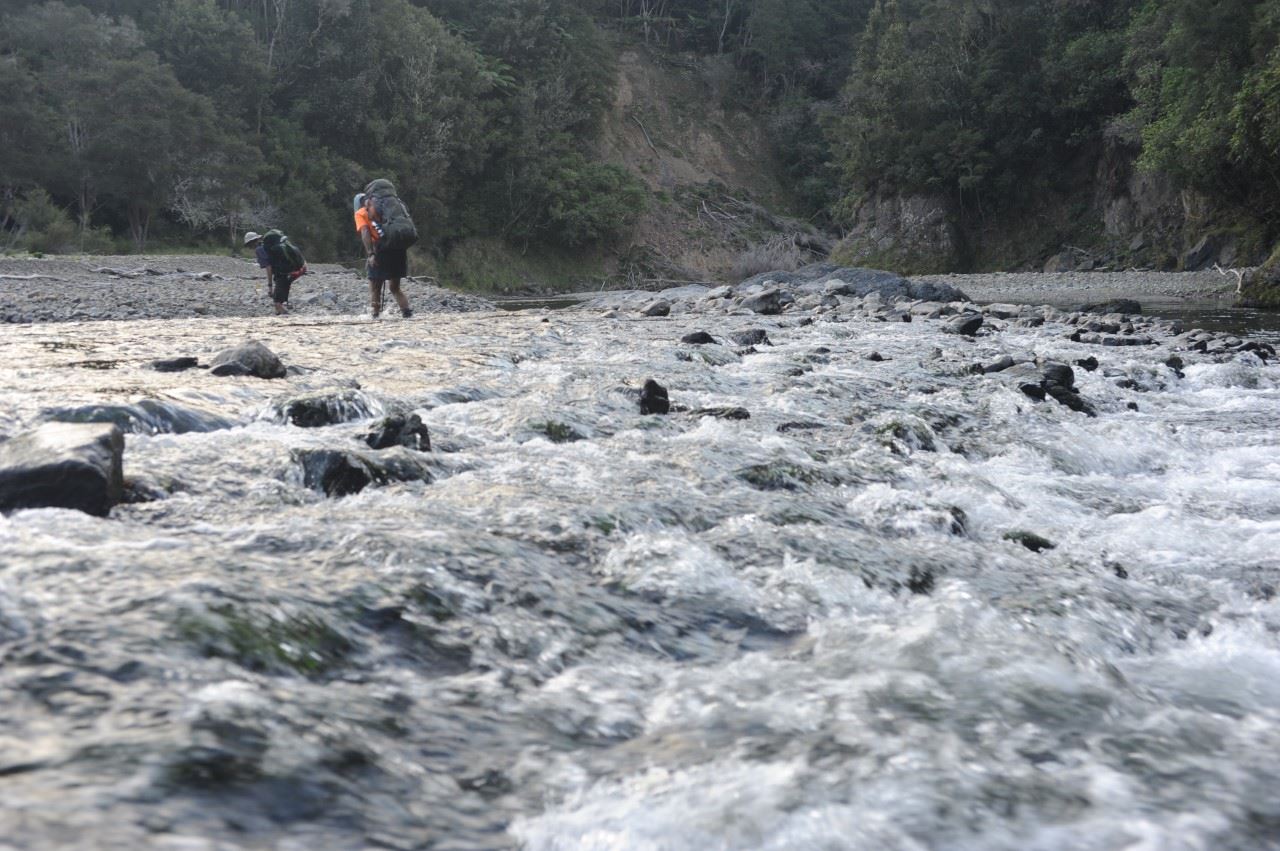
At 6am next morning it was still dark and raining steadily when we were rudely awoken by a loud “Cock-a-doodle-doo!” We had a thirteen km walk ahead of us, to be followed by a five or six hour drive back to Auckland, and a very early start was necessary. We noticed that utes were passing along the river bed and decided to follow this route ourselves to save time. This required us to ford the river about a dozen times; the water was knee deep, fast flowing and not excessively cold at this time of the year. We heard a shout of greeting from the other side of the river and met up with the two who had left us on the first day. Over the last hour of the walk torrential rain fell, and it would probably not have been safe to ford the river later in the afternoon. We reached the road near Ruatoki and were soon aboard Big Yellow.
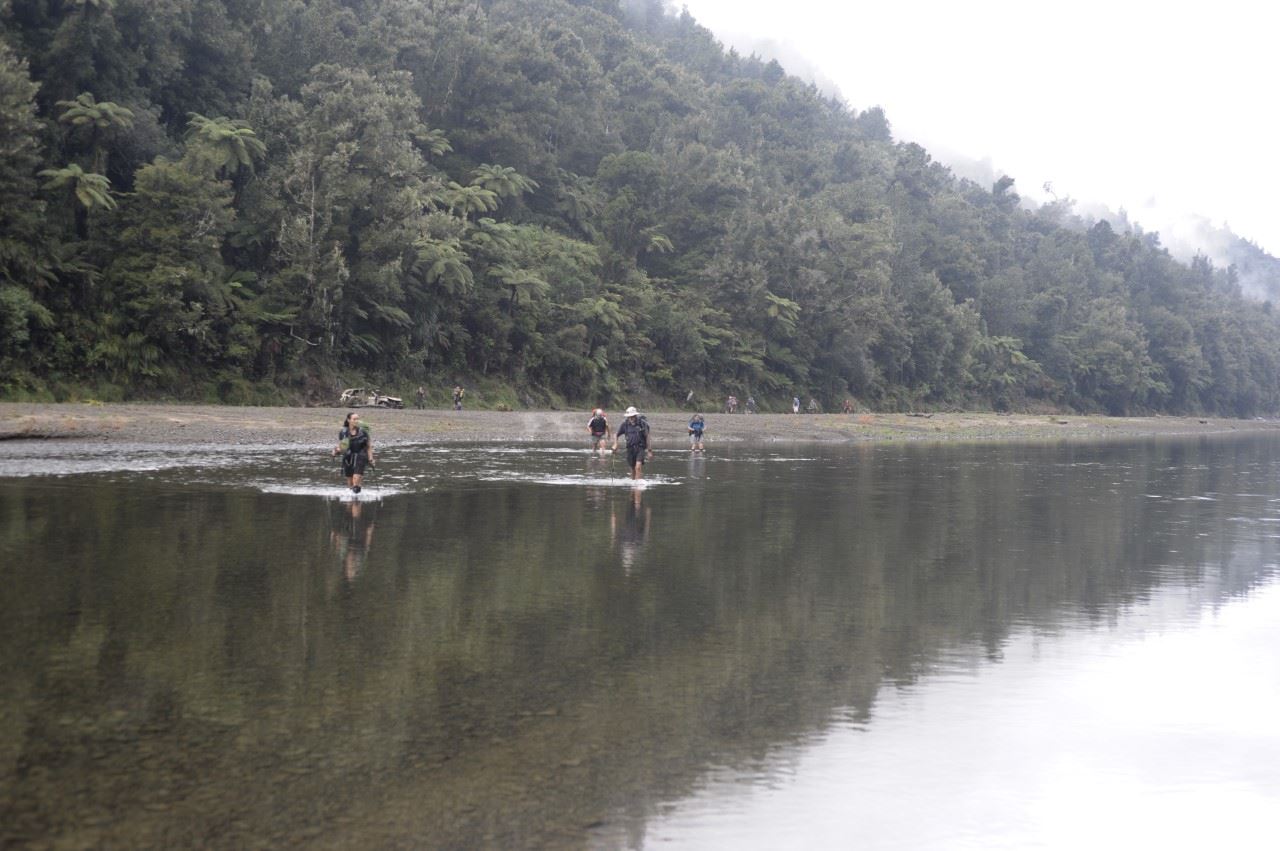
This tramp proved to be more challenging than I had anticipated. The track closely followed the river and route-finding appeared to be straight-forward but this was far from being true. At times the track climbed high above the river, or went several hundred meters inland, and was often badly overgrown and poorly marked (or not marked at all). Despite these difficulties it was awesome country and I enjoyed the experience very much. Thanks to Ralph, the organizer, and to Campbell and Bernhard, the drivers.